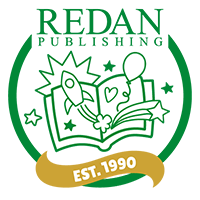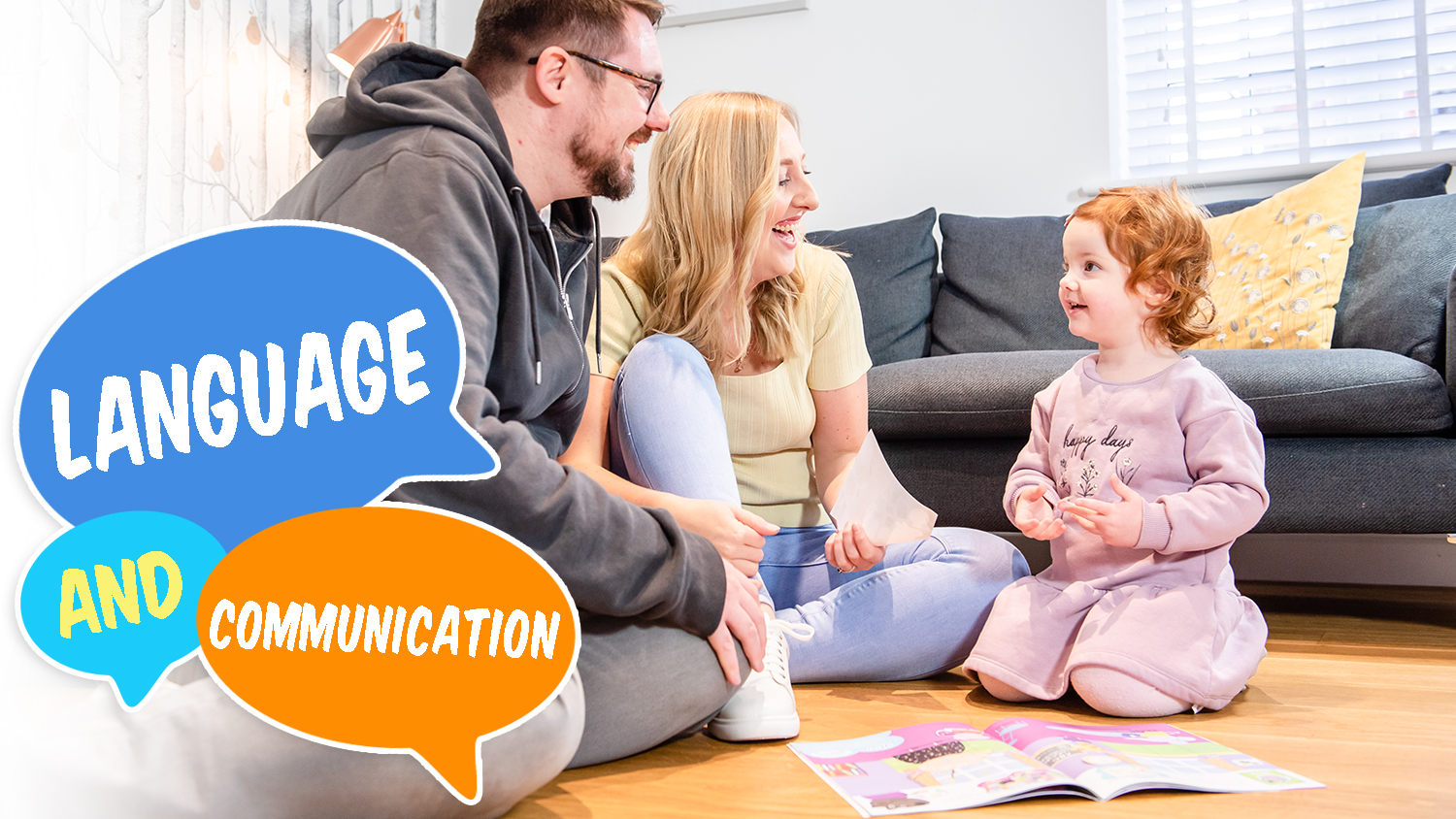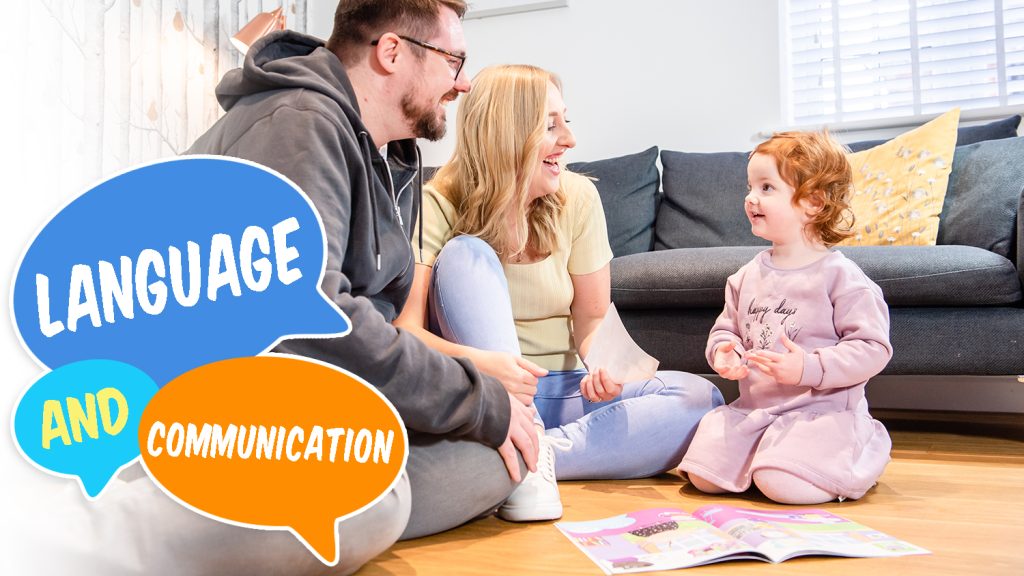
The Beautiful Early Years!
Key Area No.4: Communication and Language Development
As humans, the need to communicate is central to our very being. Even pre-birth we strive to find ways to interact with our babies and this desire is deepened from the first cry to the first smile and words. It will therefore be no surprise that the Communication and Language area of the Early Years Curriculum underpins all other development.
I vividly remember internally urging myself to actually speak to my children as on some days, it was as much as I could do to keep my children alive! So, even on your tiredest of days here are some ‘wins’ on how to keep your child’s communication and language thriving…
Beautiful Books and Magazines
Books are the gateway to developing your child’s vocabulary, imagination, reading, empathy and understanding of the world. Reading books aloud, with expression and interest is possibly one of the single most powerful parenting gifts you can give your child.
Magazines contain all sorts of reading material and as they are interspersed with fun activities, they offer a gentler introduction to reading. They are especially useful if your child feels daunted or overwhelmed by books.
Charity shops and libraries are great ways of getting new reading material. Also, reading favourite stories over and over has great language benefits as children can internalise vocabulary and sentence structures into their long-term memory and get an intense joy from anticipating the plot line and their love of the characters or content. You can then take these books into daily life when you know them well. For example, ‘We’re going on a bear hunt,’ might become ‘We’re going on a bread hunt’ in the supermarket…yes, I was THAT parent!
Follow your child’s interests, you might learn something too… My daughter loved diggers and was fascinated by books about building sites. This then fed into our daily experiences as we realised we could name more and more of the vehicles we saw in real life.
Don’t be afraid of books which are more challenging. There is plenty of research that shows that exposure to rich vocabulary is a good thing. So, whilst you want it to be accessible don’t always go for basic.
Check out these great activities which expand your child’s vocab in these recent issues of Fun To Learn magazines:
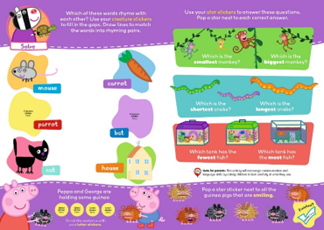 FTL Friends #478 – Peppa Pig workbook Solve page
FTL Friends #478 – Peppa Pig workbook Solve page
Supporting the development and understanding of words related to measure. Ask the questions such as, ‘Which is the smallest?’ Ask how they know and then apply this in the environment at home… ‘Who has the smallest shoes/ fewest chips/ most toys’ etc.
FTL Favourites #417 and FTL Favourites #418 – Baby Shark Odd One Out/ PJ Masks Look page
Look carefully at the pictures and discuss how we can find the odd ones out? What do they see? What is the same? What is different?
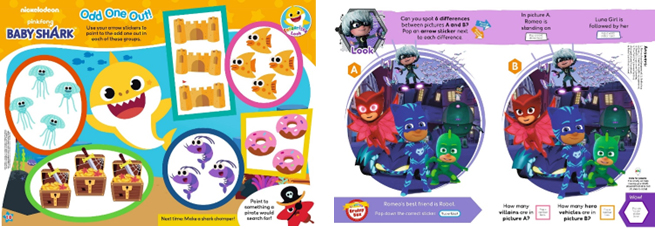
On the Peppa Pig workbook Find page use the questions to extend their thinking about the pictures
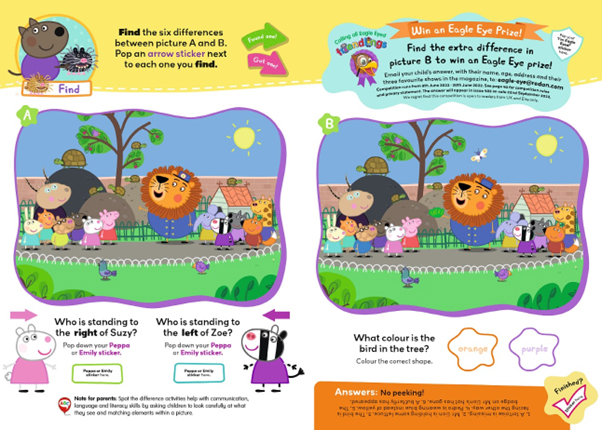
Singing
In my house we had, ‘Wind the bobbin up’ on a reel! Songs which have actions like this are brilliant for developing your child’s creative language and vocabulary as the actions define the meaning of the words, ‘Point to the ceiling, point to the floor…clap your hands together, 1,2,3.’ Such a lovely way of sharing the joy of singing and rhythm with language development.
To name but a few great actions songs…
- Heads, Shoulders, Knees and Toes
- Incy Wincy Spider
- Old Macdonald
- If you’re happy and you know it
- Twinkle, Twinkle Little Star
- The Wheels on the Bus.
Singing in tune is not necessary, just have fun!
Speaking, When and How…
It is vital that we understand that children’s language and communication develops at very different rates. When my youngest was at Nursery she did not talk. I learnt to appreciate that ‘normal’ is a definition which is most unhelpful and for her, language and communication needed a more measured approach. Resist the urge to panic, seek advice and be present with your child and their needs. Language and communication may not always involve lots of words and that is okay.
As children are developing there are some little tricks we can use to help them along the way…
- Respond and Develop – as our child’s teacher it is very hard not to correct as our desire is for them to learn. A simple way to correct without drawing attention to the error is to answer like this,
Child – ‘I swimmed’
Parent – ‘That’s right, you swam on holiday with Daddy!’
- Extend – you can then develop the conversation with a question, ‘What did the sea feel like?’
And to help your child to deepen their thinking and extend their vocabulary…
- Deepening Communication In daily activities a great way to develop language and communication is to ask open ended questions, ‘I wonder why that bird has chosen that tree?’ ‘What will happen if I put this toy in the bath?’
- Introduce New Words ‘I am creeping up the stairs…I am searching for the peas.’
- Talking about Feelings One of the very sad facts about humans is how poor we are at communicating our feelings. We can help our children by assisting them to label emotions from a young age, ‘Daddy is disappointed because the cake has burnt.’ ‘I am so overjoyed you went down the big slide.’
- Role-Play Children will often experiment with vocabulary and develop their communication skills during role play. Joining in and adding to their story can be helpful but often they might enjoy this time to freely play with words on their own or with friends. It’s always a joy to watch!
Listening
It seems obvious but sometimes we can forget that listening is the most important part of communication. Oh, the number of times I respond to my children without having a clue what they have said. This is normal, we are busy but it’s so much more fulfilling when we engage…
Taking time to get down to their level, to really listen and respond grows your little person’s confidence and their voice. That is a beautiful thing…
Rachel x
This Blog series looks at the 7 key areas of learning in the Early Years Foundation Stage and links activities featured in our Fun To Learn magazine range that will help support this development.
Images: © Redan
Sample Page Images: © ABD/eOne/Hasbro. | © FrogBox/eOne/Hasbro. | © Viacom.
